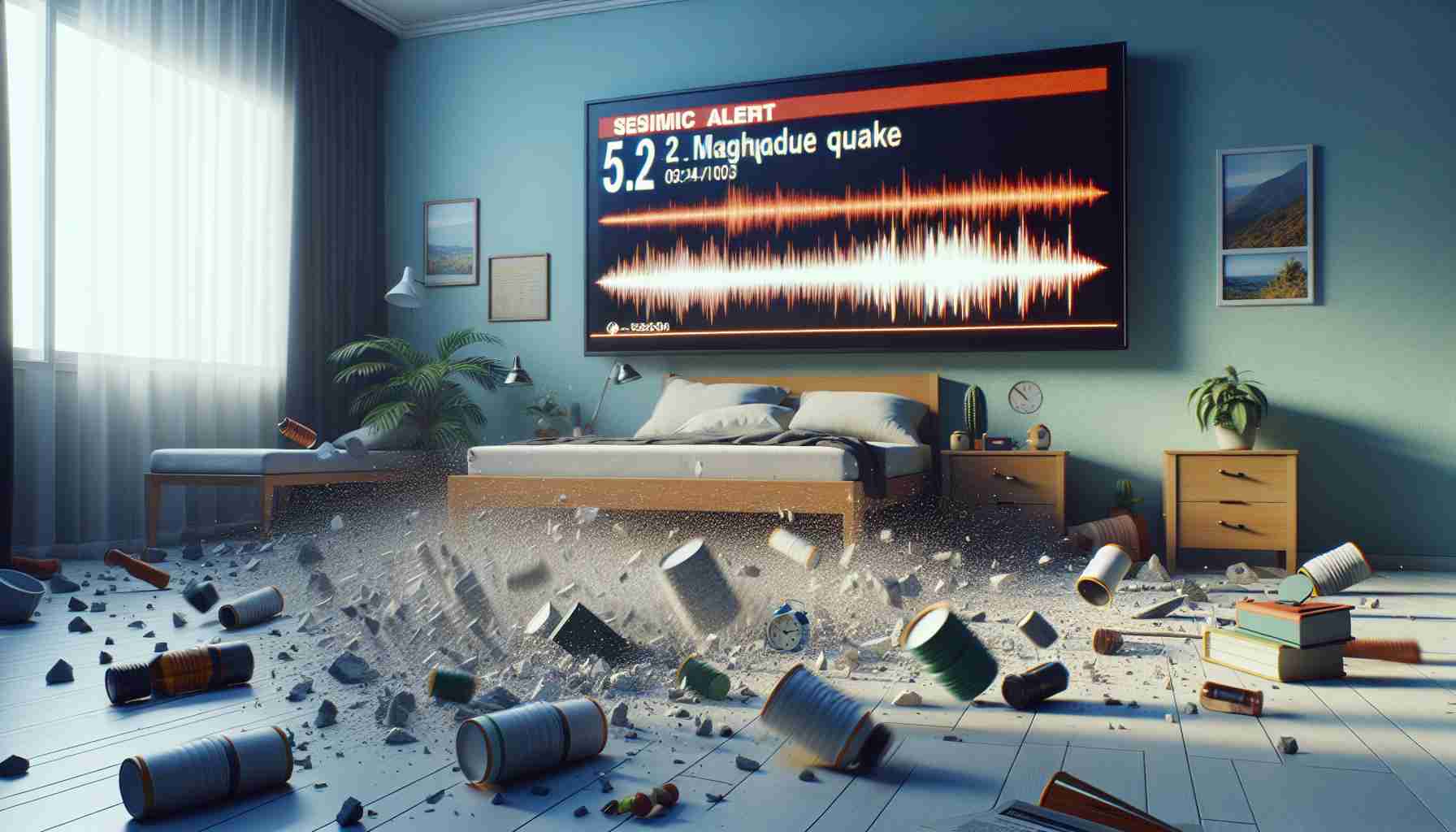- On February 10, 2025, a 5.2 magnitude earthquake struck northern Morocco at 11:48 PM local time.
- The quake originated from 20 kilometers deep, near the commune of Brichka in Ouezzane Province.
- Multiple cities, including Tangier, Nador, and Casablanca, reported seismic activity, causing concern among residents.
- No immediate damages or casualties were reported following the earthquake.
- The region is prone to seismicity due to its location between the African and Eurasian tectonic plates.
- Residents are urged to remain vigilant and prepared for possible aftershocks.
- Preparedness and adherence to safety protocols are crucial in earthquake-prone areas.
On the night of February 10, 2025, at 11:48 PM local time, Morocco experienced a jolt of fear as a 5.2 magnitude earthquake rippled through its northern regions. The tremor, originating from a depth of 20 kilometers beneath the earth, centered near the quaint commune of Brichka in Ouezzane Province.
Residents from bustling cities like Tangier to Nador and even as far as Casablanca felt the ground shake, sparking waves of concern. Thankfully, local authorities reported no immediate damages or casualties, but the sheer power of the quake served as a stark reminder of Morocco’s location at the seismic crossroads between the African and Eurasian tectonic plates.
This area is notorious for its seismic activity, with memories still fresh from the devastating 6.8 magnitude earthquake that struck the High Atlas region in September 2023, causing significant destruction. As uncertainty lingers, officials urge vigilance among residents, encouraging everyone to remain alert and adhere to safety protocols, especially in light of possible aftershocks.
While this recent quake delivered a momentary thrill, it also highlights the importance of preparedness in seismically active zones. Stay informed, follow local guidelines, and ensure your safety. The earth may shake, but knowledge and readiness can steady our resolve.
Morocco’s Earthquake Shakes Up Awareness: Are You Ready?
Overview of the February 10, 2025, Earthquake in Morocco
On February 10, 2025, at 11:48 PM local time, a 5.2 magnitude earthquake struck northern Morocco, particularly affecting the commune of Brichka in Ouezzane Province. With a depth of 20 kilometers, this tremor was felt across a wide area, including major cities like Tangier, Nador, and even Casablanca. Although initially alarming, local authorities reported no immediate damages or casualties. This incident underscores Morocco’s position at the seismic crossroads between the African and Eurasian tectonic plates, an area with a significant history of seismic activity.
Market Forecasts: Earthquake Preparedness
In light of these recurring seismic events, the market for earthquake preparedness solutions in Morocco is expected to grow significantly. Businesses specializing in earthquake-resistant infrastructure, as well as safety equipment, are likely to see increased demand. According to market analysts, the earthquake preparedness sector could experience a growth rate of over 10% annually for the next five years, driven by heightened public awareness and government initiatives focused on disaster resilience.
Trends in Seismic Activity and Safety Innovations
Innovations in earthquake safety technology are emerging rapidly. Key trends include the development of advanced building materials that increase structural resilience and the adoption of early warning systems that utilize AI to predict seismic events. These technologies aim to minimize damage and enhance community safety in high-risk areas.
Safety Protocols and Preparedness Measures
Communities are urged to follow safety protocols to safeguard against future earthquakes. This includes:
– Creating an emergency plan: Families should discuss and establish evacuation routes and meeting points.
– Securing heavy furniture: Bolting cabinets, bookshelves, and picture frames to walls can prevent injuries.
– Storing emergency supplies: Keeping a supply of food, water, and medical necessities is crucial.
Related Questions:
1. What should I do immediately after an earthquake?
After the shaking stops, check yourself and others for injuries. Move away from buildings and power lines, and be prepared for aftershocks. Stay outside until authorities confirm it’s safe to re-enter buildings.
2. How can I make my home more earthquake-resistant?
Enhance your home’s earthquake resistance by securing heavy furniture, retrofitting your foundation, and ensuring that your structural components meet current seismic standards. Consulting with an engineer can provide tailored solutions.
3. What resources are available for earthquake preparedness training?
There are various organizations, including local government agencies and NGOs, that offer earthquake preparedness training. Online resources such as the Earthquake Country Alliance provide guides, checklists, and instructional materials.
Suggested Resources:
For more information on earthquake preparedness, safety protocols, and innovations in earthquake safety, visit US Geological Survey and American Red Cross.
In conclusion, while the recent earthquake served as a wake-up call, it also presents an opportunity for communities to strengthen their resilience and emergency preparedness in the face of future seismic events. Staying informed and proactive can make a significant difference when the earth shakes.















